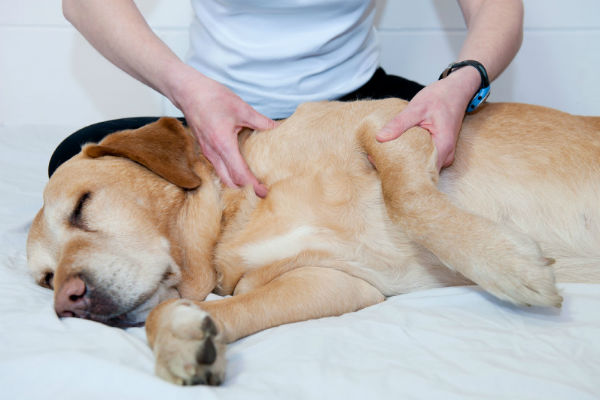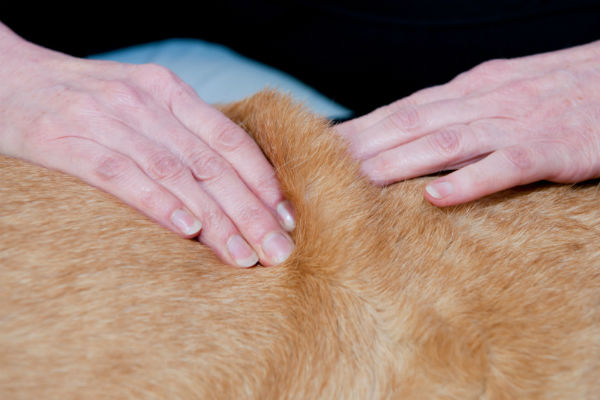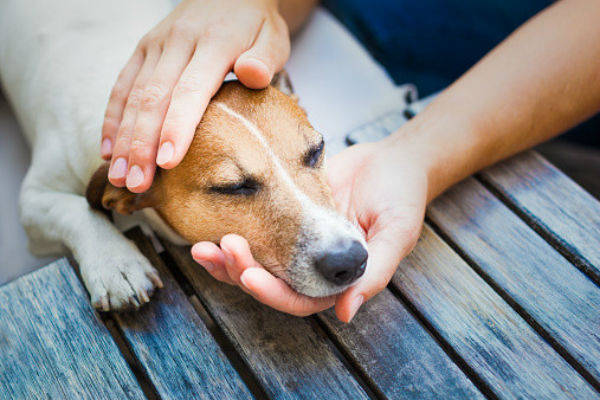What you may consider simply an indulgent spa service can actually benefit your pet’s mental and physical health. Massage may reduce stress and anxiety, increase circulation, decrease pain, and strengthen the bond between you and your dog. Also, it can help to identify new growths at an early stage. The best part? You don’t even have to leave the couch.
Massage can be beneficial for:
Anxiety
Like a Thundershirt or other swaddling tool, the hands-on contact of massage may be effective in reducing anxiety during a thunderstorm or fireworks show, after returning from boarding, or when otherwise nervous and restless.
Arthritis
The act of gentle rubbing and kneading can increase circulation to sore muscles and joints. The gentle pressure of your hands causes tissues to contract and increases local blood flow. Take caution not to press too hard, and stop if he flinches, moves away, nips, or growls. (Note: Massage is not a substitute for veterinary care.)
Pre-Activity
Just like human athletes, dogs can benefit from a preworkout warmup. A gentle massage stimulates circulation;
increases blood supply to joints, muscles, and nerves; and can even help prevent injury and postworkout soreness.
Post-Activity
Age, overexertion, too much inactivity, and previous injuries can all lead to postexercise stiffness and pain. Massage can help alleviate some of this discomfort.
How to massage your dog:

Pick a quiet part of the house for the massage to help your dog feel calm. (Do not try massage if he is overly fearful.) First, softly stroke the area of interest. Use flat palms to lightly press against the skin. Move your hands slowly using long, sweeping motions. While massaging, take note of any swelling, increased sensitivity, and pain. Stop if it seems to hurt your dog.

Using the technique described above, start from the head and neck, and work down the body, gently increasing pressure if your dog seems to be enjoying it. Do not press straight down on bones or joints. Avoid areas where your dog doesn’t like to be touched (e.g., many dogs are sensitive to having their feet prodded).

A gentle massage at the base of the skull and the base of the tail can stimulate relaxation. Remember to make the experience enjoyable for him—stop if your dog flinches, pulls away, cries out, or seems to be in pain. Perhaps the greatest benefit of massaging your dog is strengthening your bond with him.
Other integrative treatments for dogs to help alleviate soreness, pain, and effects of arthritis include:
- Acupuncture
- Swimming
- Cold-laser therapy
- Weight loss
- Gentle exercise
Your veterinarian can help determine if any of these are right for your dog.

